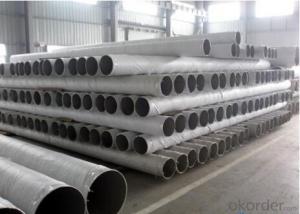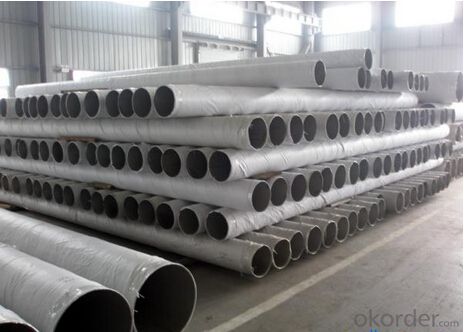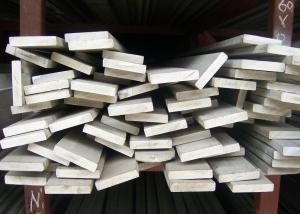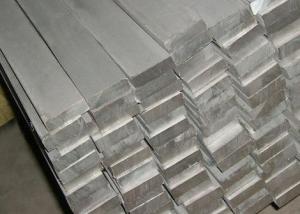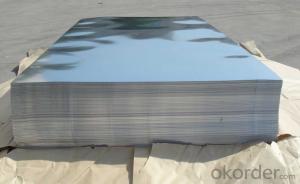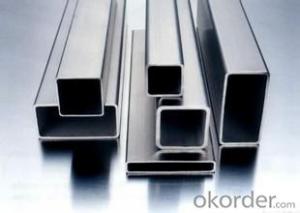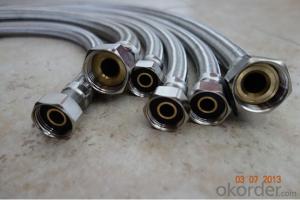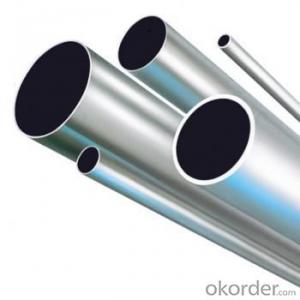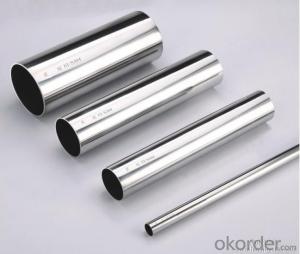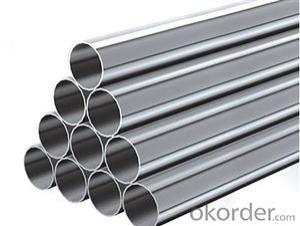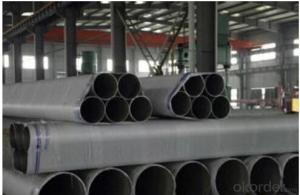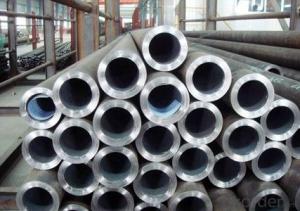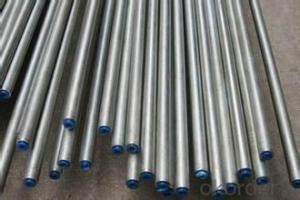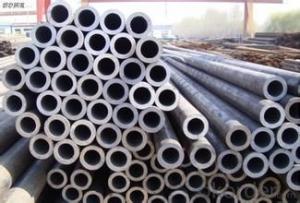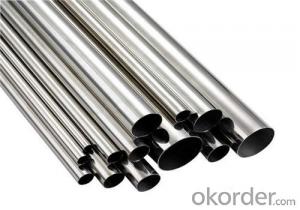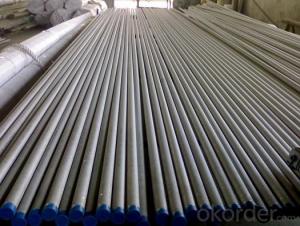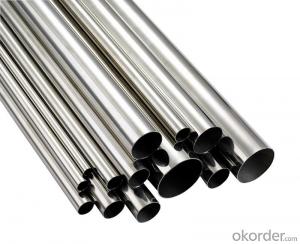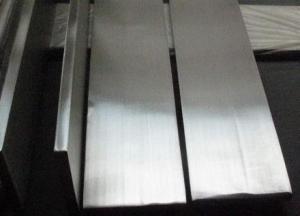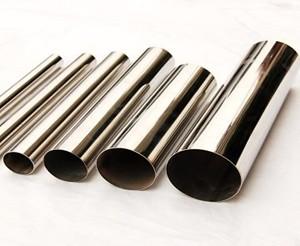Stainless Steel Seamles Pipe 304 ASTM A312
- Loading Port:
- Ningbo
- Payment Terms:
- TT or LC
- Min Order Qty:
- 1 m.t.
- Supply Capability:
- 5000 m.t./month
OKorder Service Pledge
OKorder Financial Service
You Might Also Like
1、Structure of Stainless Steel Seamles Pipe 304 ASTM A312 Description:
Stainless seamless pipe is formed by drawing a solid billet over a piercing rod to create the hollow shell. As the manufacturing process does not include any welding, seamless pipes are perceived to be stronger and more reliable. Historically seamless pipe was regarded as withstanding pressure better than other types, and was often more easily available than welded pipe.
2、Main Features of the Stainless Steel Seamles Pipe 304 ASTM A312:
• High manufacturing accuracy
• High strength
• Small inertia resistance
• Strong heat dissipation ability
• Good visual effect
•Reasonable price
3、Stainless Steel Seamles Pipe 304 ASTM A312 Images:
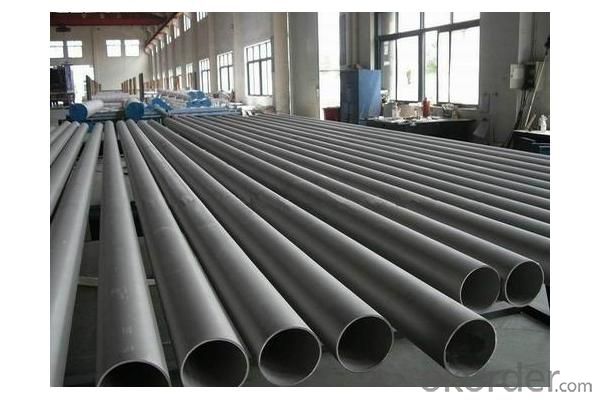
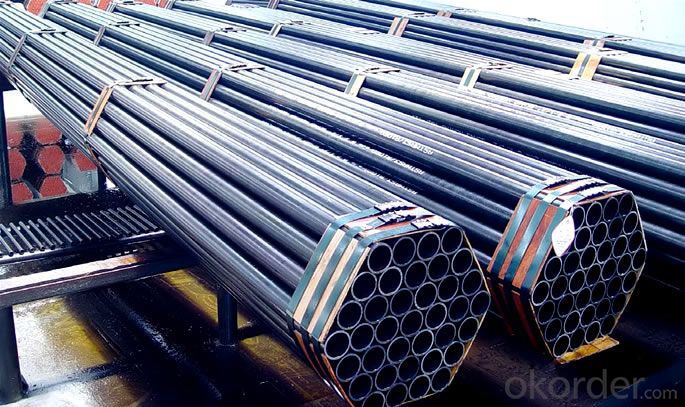
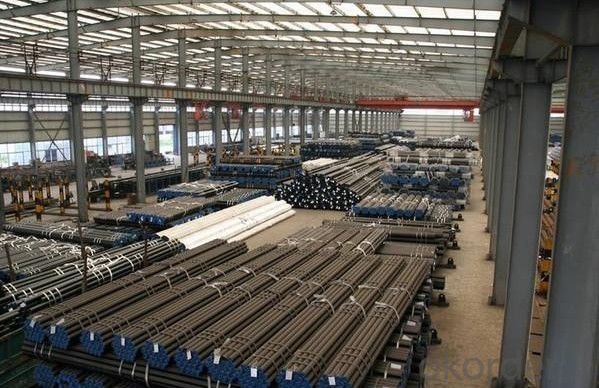
4、Stainless Steel Seamles Pipe 304 ASTM A312 Specification:
Experienced Lists of Standard |
Applicable Code No. |
Steel Grade |
ASTM |
A213, A269, A312, A789, A790, B677, A268 | TP304/L/H, TP310/S/H, TP316/L/H/Ti, TP317/L, TP321/H, TP347/H, S31803, S32205, S32750, S32304, S31500, TP904L, TP410, TP430, TP405, TP409/409L |
ASME |
SA213, SA312, SA789, SA790, SB677 | TP304/L/H, TP310/S/H, TP316/L/H/Ti, TP317/L, TP321/H, TP347/H, S31803, S32205, S32750, S32304, S31500, TP904L |
JIS |
JIS G3459, JIS G3463 | SUS 304TB, SUS304HTB, SUS304LTB, SUS310TB, SUS310STB, SUS316TB, SUS316LTB, SUS316TiTB, SUS317TB, SUS317LTB, SUS321TB, SUS321HTB, SUS347TB, SUS347HTB |
EN & DIN | EN 10216-5, DIN 17456, DIN 17458 | 1.4301, 1.4307, 1.4541, 1.4878, 1.4401, 1.4404,1.4571,1.4550,1.4438, 1.4436,1.4435, 1.4462, 1.4539, 1.4912, 1.4362 |
GB&GB/T | G B13296 G B/ T14976 | 0Cr18Ni9,00Cr19Ni10,0Cr18Ni10Ti,0Cr18Ni11Nb,0Cr17Ni12Mo2,000Cr17Ni14Mo2,0Cr18 |
Type |
O.D. |
W.T. |
Length | Bending Radius | Application Specification |
S.S Seamless Tubing |
3.17mm – 101.6mm |
0.5mm – 25.4mm |
Max. 22m |
/ | A213, A269, A511, A789; SA213, SA789, B677, SB677; JIS G3463; EN 10216-5 |
S.S. Seamless Pipe |
10.29mm – 355.70mm |
0.89mm – 50.0mm |
Max. 18m |
/ | A312, A790, SA312, SA790, JIS G3459, EN 10216-5 |
S.S. Seamless U-tube |
15.88mm – 76.1mm |
0.89mm – 7.14mm |
Max. 25m |
From 1.5 x OD To 1000mm | A213, A789, SA213, SA789, B677, SB677, JIS G3463, EN 10216-5, SA688 |
Testing:
(1) Hydro-Static Test
(2) Non-Destructive Test
(3) Ultrasonic Test
(4)Eddy-Current Test
5、FAQ of Stainless Steel Seamles Pipe 304 ASTM A312:
①How is the quality of your products?
Our products are manufactured strictly according to national and internaional standard, and we take a test on every pipe before delivered out. If you want see our quality certifications and all kinds of testing report, please just ask us for it.
Guaranteed: If products’ quality don’t accord to discription as we give or the promise before you place order, we promise 100% refund.
②How about price?
Yes, we are factory and be able to give you lowest price below market one, and we have a policy that “ for saving time and absolutely honest business attitude, we quote as lowest as possible for any customer, and discount can be given according to quantity”,if you like bargain and factory price is not low enough as you think, just don’t waste your time.Please trust the quotation we would give you, it is professional one.
③Why should you chose us?
Chose happens because of quality, then price, We can give you both.Additionally, we can also offer professional products inquiry, products knowledge train(for agents), smooth goods delivery, exellent customer solution proposals.Our service formula: good quality+good price+good service=customer’s trust
SGS test is available, customer inspection before shipping is welcome, third party inspection is no problem.
Any question, pls feel free to contact us !
- Q: Can stainless steel pipes be used for hygienic applications?
- Yes, stainless steel pipes can be used for hygienic applications. Stainless steel is a highly durable and corrosion-resistant material that is commonly used in industries where hygiene is of utmost importance, such as food and beverage, pharmaceutical, and biotechnology sectors. Stainless steel pipes have a smooth surface that prevents the growth of bacteria and other microorganisms, making them suitable for applications where cleanliness is crucial. They are also easy to clean and maintain, as the smooth surface allows for efficient and thorough cleaning, reducing the risk of contamination. Moreover, stainless steel pipes are non-reactive and do not release any harmful substances into the products being transported. This makes them ideal for applications where sanitary conditions are essential, such as in the production and transportation of food, beverages, and pharmaceuticals. Additionally, stainless steel pipes have excellent resistance to high temperatures, chemicals, and corrosion, ensuring the integrity of the system and preventing any contamination or leaks. They are also highly durable and can withstand harsh operating conditions, making them a reliable choice for hygienic applications. In conclusion, stainless steel pipes are suitable for hygienic applications due to their durability, corrosion resistance, smooth surface, ease of cleaning, and non-reactivity. They provide a reliable and sanitary solution for industries where hygiene is a top priority.
- Q: Are stainless steel pipes suitable for pharmaceutical factories?
- Yes, stainless steel pipes are suitable for pharmaceutical factories. Stainless steel is a popular material choice in the pharmaceutical industry due to its excellent corrosion resistance and hygienic properties. It is resistant to various chemicals and can withstand high temperatures and pressures, making it ideal for transporting and storing pharmaceutical products, chemicals, and other fluids. Stainless steel pipes also have a smooth surface, which promotes easy cleaning and prevents the accumulation of bacteria, ensuring the pharmaceutical products remain uncontaminated. Furthermore, stainless steel is a durable material with a long lifespan, reducing the need for frequent replacements and maintenance. Overall, stainless steel pipes are a reliable and suitable choice for use in pharmaceutical factories.
- Q: What is the difference between 316 and 316H stainless steel pipes?
- The primary distinction between 316 and 316H stainless steel pipes lies in their carbon composition. In the case of 316 stainless steel pipes, their maximum carbon content is 0.08%, rendering them ideal for situations where corrosion resistance is crucial, such as marine environments. Furthermore, they are renowned for their outstanding welding and forming abilities, leading to their popularity across various industries. Conversely, 316H stainless steel pipes contain a higher carbon content, typically ranging from 0.04 to 0.10%. This increased carbon composition enhances their strength and resistance to deformation at high temperatures, making them suitable for applications involving elevated temperatures, such as high-pressure steam systems or the petrochemical industry. Overall, both 316 and 316H stainless steel pipes exhibit satisfactory corrosion resistance and performance. However, the 316H variant is specifically engineered to withstand higher temperatures and possess superior strength properties.
- Q: Can stainless steel pipes be laser welded?
- Yes, stainless steel pipes can be laser welded.
- Q: Can stainless steel pipes be insulated with polysulfone?
- Stainless steel pipes can indeed be insulated with polysulfone. Polysulfone is a highly durable and heat-resistant material that is commonly used for insulation purposes. It has excellent thermal insulation properties, making it suitable for insulating stainless steel pipes in various applications. Additionally, polysulfone is known for its resistance to chemicals, making it a suitable choice for environments where corrosion or chemical exposure is a concern. However, it is important to ensure that the polysulfone insulation is compatible with the specific requirements and temperatures of the stainless steel pipes being insulated. Consulting with a professional or referring to the manufacturer's guidelines can help determine the suitability of using polysulfone insulation for stainless steel pipes in a particular application.
- Q: Are stainless steel pipes resistant to scaling and oxidation?
- Yes, stainless steel pipes are highly resistant to scaling and oxidation. This is due to the presence of a protective layer of chromium oxide on the surface of stainless steel. This layer acts as a barrier, preventing the metal underneath from coming into contact with oxygen and other elements that may cause scaling and oxidation. As a result, stainless steel pipes are able to withstand high temperatures, corrosive environments, and frequent exposure to water without deteriorating or rusting. This makes them an excellent choice for various applications, such as in the construction, chemical, and food processing industries, where resistance to scaling and oxidation is crucial.
- Q: Are stainless steel pipes suitable for brewing systems?
- Yes, stainless steel pipes are highly suitable for brewing systems. Stainless steel is corrosion-resistant, non-reactive, and easy to clean, making it an ideal material for handling various brewing processes, including transporting water, wort, and beer. It helps maintain the purity and quality of the brew, ensuring there are no off-flavors or contaminants introduced during the process. Additionally, stainless steel pipes are durable and can withstand high temperatures and pressure, making them a reliable choice for brewing systems.
- Q: Can stainless steel pipes be bent or curved?
- Yes, stainless steel pipes can be bent or curved. Stainless steel is a versatile material that can be easily formed into various shapes, including bends and curves. This flexibility is due to its excellent ductility and high tensile strength. Stainless steel pipes are commonly bent or curved to fit specific design requirements in industries such as construction, automotive, and manufacturing. The bending process can be achieved through various methods, including hot bending, cold bending, and mandrel bending, depending on the desired shape and specifications. It is important to note that the bending or curving of stainless steel pipes should be done with proper equipment and expertise to ensure the integrity and quality of the pipe.
- Q: How do you calculate the flow rate of stainless steel pipes?
- The flow rate of stainless steel pipes can be calculated using the formula: Q = A × V, where Q represents the flow rate, A is the cross-sectional area of the pipe, and V is the velocity of the fluid flowing through the pipe.
- Q: What is the difference between 201 and 316 stainless steel pipes?
- The main difference between 201 and 316 stainless steel pipes lies in their chemical composition and respective properties. 201 stainless steel is a lower grade of stainless steel compared to 316. It contains a higher amount of manganese and nitrogen, which gives it improved strength and corrosion resistance compared to other lower grade stainless steels. However, it is not as durable as 316 stainless steel and is more prone to corrosion and rusting. On the other hand, 316 stainless steel is a high-quality grade that contains a higher percentage of chromium and nickel. These elements enhance its corrosion resistance, making it highly resistant to pitting and crevice corrosion, especially in chloride environments. 316 stainless steel pipes are also more resistant to high temperatures and have superior strength compared to 201 stainless steel pipes. Therefore, 316 stainless steel pipes are widely used in industries with demanding requirements such as marine, chemical, and medical sectors, where corrosion resistance and durability are crucial. 201 stainless steel pipes, while suitable for general applications, are more commonly used in less demanding environments where cost-effectiveness is a priority.
Send your message to us
Stainless Steel Seamles Pipe 304 ASTM A312
- Loading Port:
- Ningbo
- Payment Terms:
- TT or LC
- Min Order Qty:
- 1 m.t.
- Supply Capability:
- 5000 m.t./month
OKorder Service Pledge
OKorder Financial Service
Similar products
Hot products
Hot Searches
Related keywords
